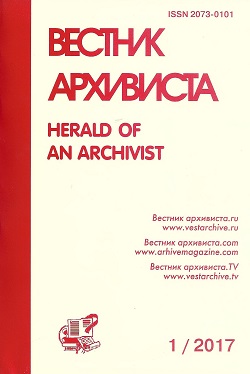Patterns of Recruitment and Deportation of the Stary Oskol District Inhabitants during German Occupation



УДК 94(47)«1941–1945»
DOI 10.28995/2073-0101-2019-4-1102-1114
Vladimir I. Kovalev
Gubkin Branch of the V. G. Shukhov Belgorod State Technological University, Gubkin, Russian Federation
Patterns of Recruitment and Deportation of the Stary Oskol District Inhabitants during German Occupation
Abstract
The article studies relations of the Stary Oskol district civilian population with the German and Hungarian military command organizations and the local collaborationist administration on transfer of young workers to Germany. The blitzkrieg having failed, Nazi Germany needed cheap labor provided by occupied Soviet territories. Having analyzed the existing documentary material, the author concludes that the Stary Oskol district administration and its city council, assisted by foremen and village elders, failed to organize a full scale recruitment campaign and deportation of civilian population to work in Germany. The idea of recruiting and driving civilians to work in Germany is formulated by the author clearly and convincingly. The article discusses the local collaborationist authorities’ plan and practice of reducing or abolishing capitation tax for those who went to work in Germany voluntarily. The paper proves that the majority of the Stary Oskol district residents were driven to work in Germany by force. The author analyzes age requirements for deported residents from Stary Oskol, suburban settlements, and villages. The article is valuable because its author tries to rethink the process of recruitment and transfer of civilians from the Stary Oskol district during the occupation. The great advantage of the work is that a significant part of archival documents is introduced into scientific use for the first time. The article expands the notions of national historiography on the activities of local collaborationist administration in recruitment and forced deportation of Soviet citizens to work in Germany. The novelty of the research is that it is the first study of patterns of recruitment and driving civilians of a particular area to work in Germany during 7 months of occupation.
Keywords
Historical sources, archival document, recruitment, deportation, settlement, rural management, elder, collaboration, Starooskol'skiy district.
Download the article: kovalev_doi
References
ANDRIYANOV, V. I. Arkhipelag OST. Sud’ba rabov “Tret’ego reikha” v ikh svidetelstvakh, pismakh i dokumentakh [Archipelago OST: The fate of the slaves of the Third Reich in their testimonies, letters and documents. In Russ.]. Moscow, Molodaya gvardiya publ., 2005, 222 p.
VERBITSKII, G. G. Ostarbaitery: Istoriya rossiyan, nasilstvenno vyvezennykh na rabotu v Germaniyu vo vremya Vtoroi mirovoi voiny [Ostarbeiters: History of Russians Forcibly Transfered to Work in Germany during the Second World War]. St. Petersburg, Izd-vo Sankt-Peterburgskogo universiteta publ., 2004, 240 p.
POLYAN, P. Zhertvy dvukh diktatur. Ostarbaitery i voennoplennye v Tret’em Reikhe i ikh repatriatsiya [Victims of two dictatorships: Ostarbeiters and prisoners of war in the Third Reich and their repatriation. In Russ.]. Moscow, Vash Vybor TsIRZ publ., 1996, 442 p.
About author
Kovalev Vladimir Ivanovich, PhD in History, associate professor, of Gubkin Branch of the V. G. Shukhov Belgorod State Technological University, Russian Federation, +7-908-789-30-52, This e-mail address is being protected from spambots. You need JavaScript enabled to view it
Submitted 13.02.2019, published (for citation):
KOVALEV, V. I. Osobennosti verbovki i ugona zhitelei Starooskol'skogo raiona v period germanskoi okkupatsii [Patterns of Recruitment and Deportation of the Stary Oskol District Inhabitants during German Occupation. In Russ.]. IN: Vestnik arhivista / Herald of an Archivist, 2019, no. 4, pp. 1102-1114. doi 10.28995/2073-0101-2019-4-1102-1114











